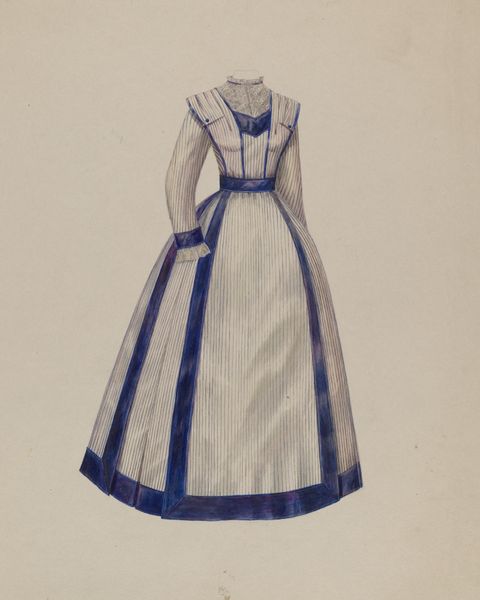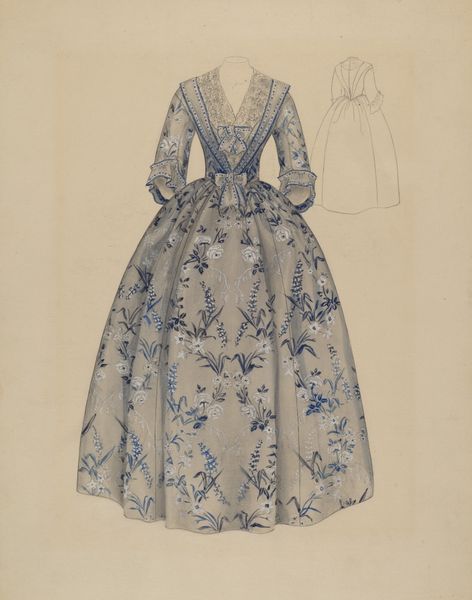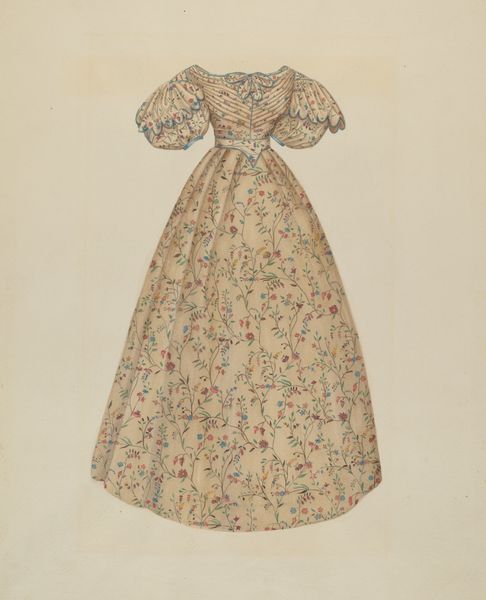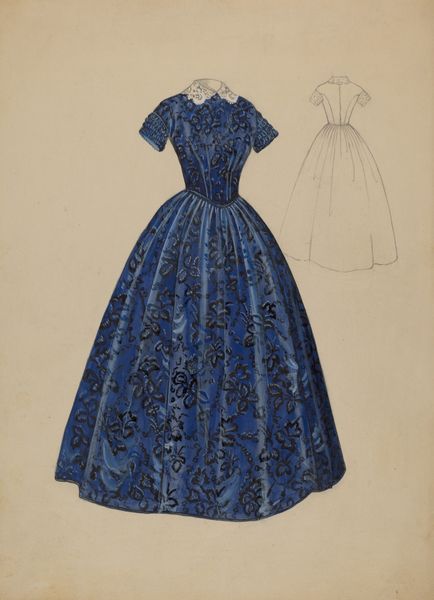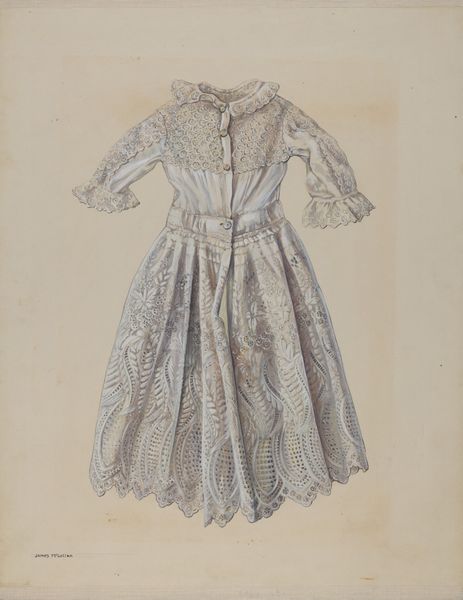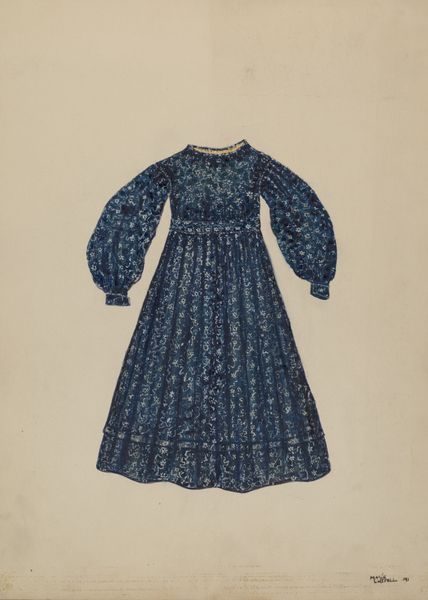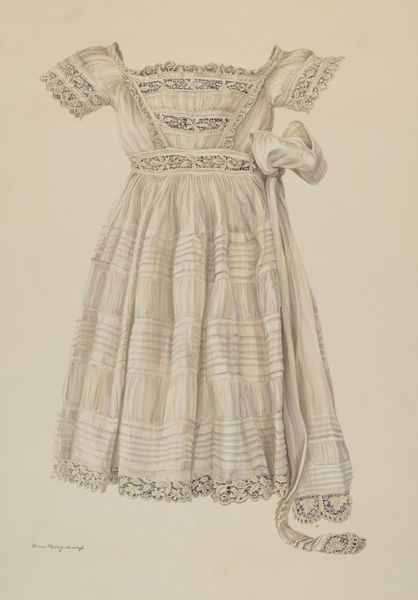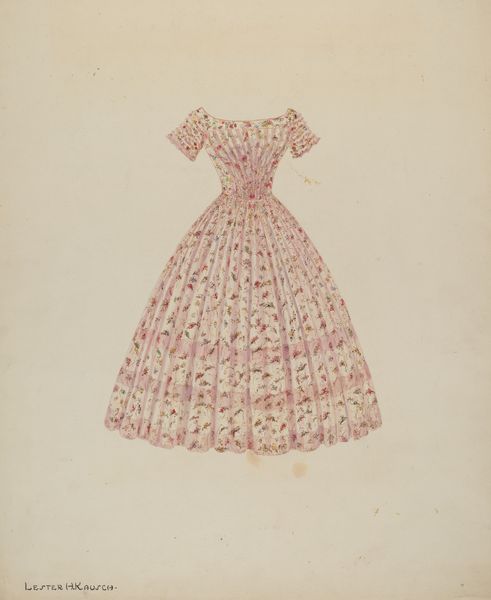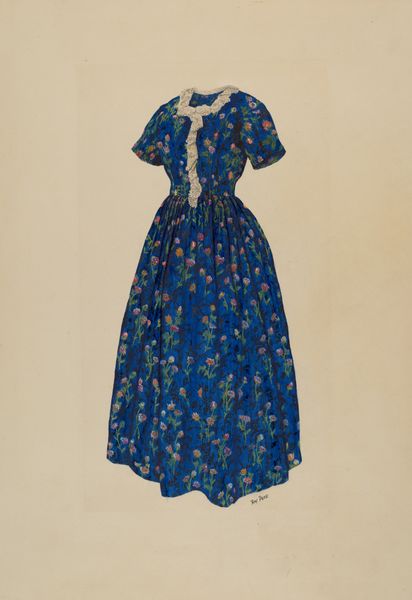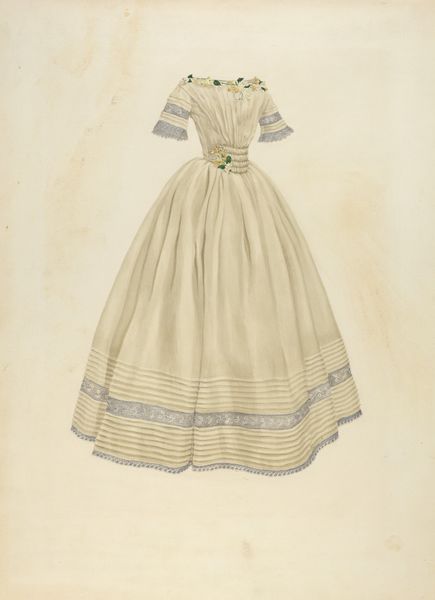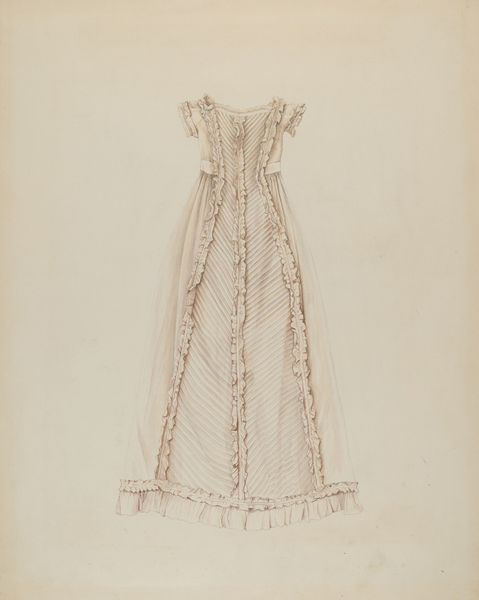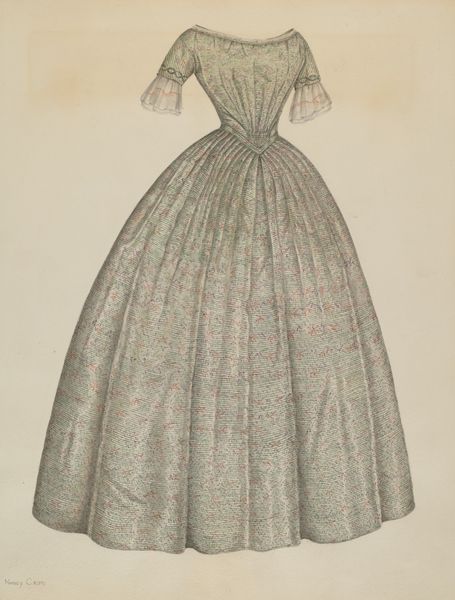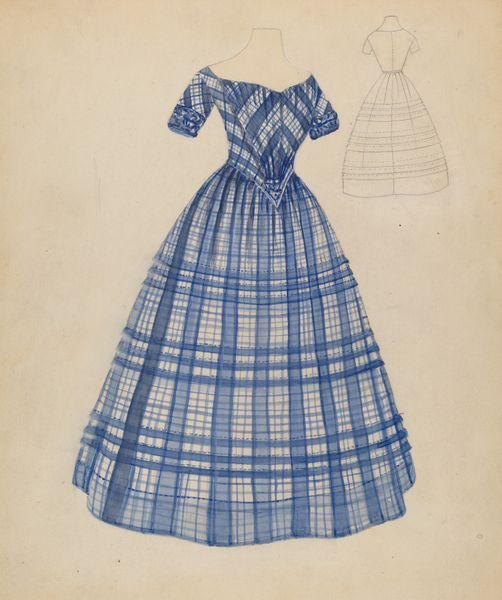
drawing, watercolor
#
drawing
#
watercolor
#
watercolour illustration
#
watercolor
Dimensions: overall: 40.8 x 31.6 cm (16 1/16 x 12 7/16 in.)
Copyright: National Gallery of Art: CC0 1.0
Curator: This watercolor and pencil drawing is entitled “Dress” and it’s by Lester Kausch, dating back to circa 1940. Editor: It’s fragile and pretty; the blue ink is beautifully translucent on the paper. A bit forlorn, though. An object that seems meant for joy, yet it's presented here so still, absent of a body. Curator: You pick up on an interesting duality. I see it too. The dress itself, rendered in such precise detail—the repeating pattern, the careful folds of the skirt— speaks of an attention to outward appearance that was so valued during that era. Think of the ideals of femininity and domesticity imposed on women. Editor: Exactly. The Second World War looms in the background. Clothes rationing and making-do was commonplace. A drawing like this might have represented an unattainable dream. Curator: Perhaps it holds a deeper resonance related to loss, reflecting not only material longings but also the hopes deferred. It may even allude to a generation grappling with economic difficulties. Consider that this dress would fit neatly into many cultural visual vocabularies across continents, all speaking to a specific idea of home, hearth, or longing for those ideas. Editor: What strikes me is the absence, almost like a ghost in a frame. It invites a discussion on women's societal expectations and what they sacrificed as people. The meticulous pattern, almost oppressively regular, seems like a form of enforced conformity. Is that a hidden commentary from Kausch? Curator: That's compelling—the question of commentary versus simple illustration. It is worth investigating how even fashion objects may participate within conversations on women and gendered identities. Consider what this aesthetic does not include, particularly when it excludes race and ethnicity in service of specific class identities and cultural production practices. Editor: Precisely. Looking at this piece through a contemporary lens prompts some fascinating, unsettling questions about power, expectation, and aspiration during wartime America. Curator: Indeed. By diving into those historical contexts and drawing connections with our contemporary experiences, we can find resonance within simple symbols that might be otherwise unseen. Editor: And that makes for an art encounter that extends far beyond what the artist, perhaps, ever anticipated.
Comments
No comments
Be the first to comment and join the conversation on the ultimate creative platform.
